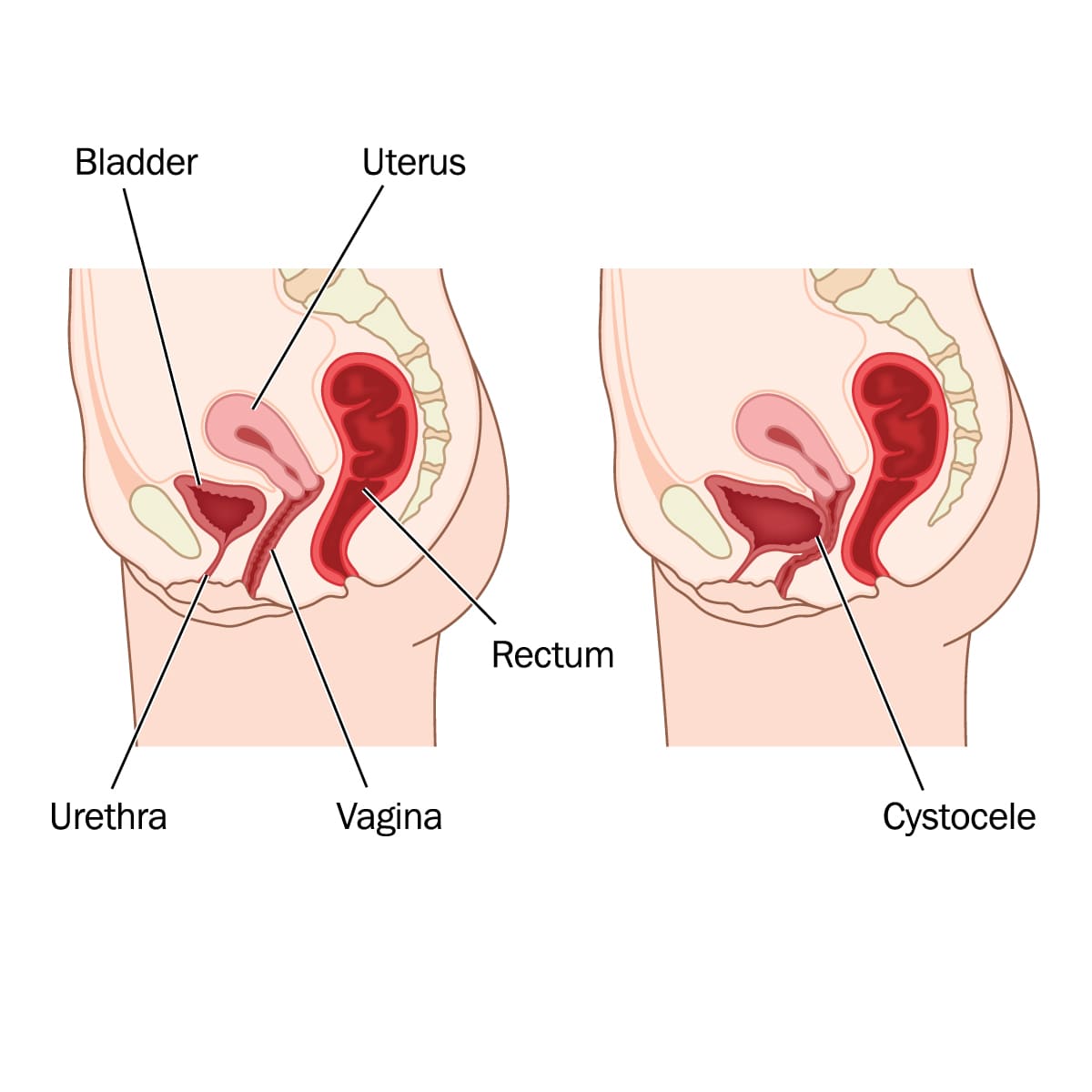
Anterior vaginal prolapse (Cystocele)

Overview
A cystocele occurs when the bladder falls from its normal position into the pelvic and pressing against the vaginal wall. It is often referred to as an anterior vaginal prolapse, herniated or a prolapsed bladder.
The muscles and connective tissues of the pelvic floor normally hold the organs of the pelvis, including the bladder, uterus, and intestines. Vaginal childbirth, chronic constipation, chronic coughing, or heavy lifting can increase the risk of cystocele, and which causes the pelvic floor to weaken or stretches that could lead to cystocele.
Many treatments are available for cystocele. Nonsurgical treatment is frequently successful for a mild or moderate prolapse. In severe prolapse, to retain the vagina and other pelvic organs in their normal locations, surgery may be required.
A grading or staging method is typically used by doctors to evaluate the severity of cystocele.
- Grade 1: The bladder only partially enters the vagina. This grade is considered mild.
- Grade 2: The bladder drops and almost reaching the vaginal opening. This is moderate case.
- Grade 3: The bladder reaches the vaginal opening and causes bulging. This is a severe case.
Symptoms
The patient might not experience or feel any symptoms or see any signs of cystocele. When they appear, signs and symptoms may include:
- Pelvic and vaginal pressure or fullness
- Feeling a bulge in the vagina
- Feeling of pelvic pressure during strain, cough, bear down or lift
- Urinary incontinence
- Constant need to urinate
- Recurring urinary tract infection
These symptoms may get worse when the patient is standing for a long time, heavy lifting, and coughing. The symptom will be relief when the patient is lie down. Prolapsed bladder could cause inconvenience and if it is left untreated it could lead to bladder infection. If the patient experiences any symptoms or signs that disturbs or interfere with their daily activities, it is recommended to schedule a visit with a healthcare professional.
Causes
The muscles, ligaments, and connective tissues that make up the pelvic floor support the bladder and other pelvic organs may get looser over time, due to delivery trauma, or of persistent pressure. The bladder may then drop lower than usual and protrude into the vagina.
The factors that contribute to weakening of pelvic floor include:
- Pregnancy and vaginal childbirth
- History of pelvic surgery (ex: hysterectomy or pelvic organ prolapse repair)
- Obesity or overweight
- Frequent heavy or intense lifting
- Straining with bowel movements
- Frequent coughing or bronchitis
Risk factors
The following factors contribute to the increased the risk to develop cystocele:
- Pregnancy and childbirth: Anterior prolapse is more likely to occur in women who have had vaginal or instrument-assisted deliveries, numerous pregnancies, or pregnancies with large-for-gestational-age babies.
- Aging: As the person gets older the body produces less estrogen, particularly after menopause, which results to weakening of pelvic floor.
- Hysterectomy: In some cases, surgical removal of the uterus could weaken of the pelvic floor.
- Genetics: Some women are more prone to anterior prolapse because of problems at birth such as weaker connective tissues.
- Obesity: Obese or overweight women are more likely to experience anterior prolapse.























